Missing Titanic sub: US Navy sends in heavy lifting machinery
The US Navy is sending special heavy-lifting gear to the search area as hopes grow of finding the submersible missing near the wreck of the Titanic.
Officials said in a statement that they are dispatching a specialised salvage system that is capable of hoisting “large, bulky and heavy undersea objects such as aircraft or small vessels.”
The Titan weighs 20,000lbs (9 tonnes) and the US Navy’s Flyaway Deep Ocean Salvage System is designed to lift up to three times that weight.
It comes after rescuers searching for the sub have been scouring the area where aircraft detected noises
It is still not clear what the sounds, which were detected over two days, were, said Capt Jamie Frederick of the US Coast Guard.
“You always have hope, that’s why we’re doing what we do,” he said.
The 21ft submersible went missing with five passengers on Sunday during a dive to the Titanic wreck site, which lies more than two miles below the surface. It is believed to have less than 20 hours of oxygen left on board.
12:21 AM BST
Our live coverage has moved
Follow the latest news and developments on the missing Titan submersible over on Thursday’s blog.
10:16 PM BST
OceanGate is ‘extremely safe operation’
A spokesman for the mothership which launched the missing submersible has defended OceanGate, saying it runs an “extremely safe operation”.
Questions were raised about the safety of the vessel, called Titan and run by OceanGate, during a press conference in Canada on Wednesday.
Five people are on board the submersible, which went missing on Sunday off the coast of Canada during a voyage to the wreck of the Titanic, and there is thought to be less than 20 hours of oxygen left.
Sean Leet, co-founder and chairman of Horizon Maritime Services, which owns the Polar Prince mothership from which Titan launched, said: “OceanGate runs an extremely safe operation.
“Our full focus right now is getting that submersible located and getting those people brought back safely.”
He added: “We’re in constant contact with the crew of the Polar Prince. Our emergency procedures kicked in immediately.
“Our emergency room is staffed 24/7 with a group of extremely capable people and there’s live communication with the vessel at all times. We’ve got 17 people on board the ship.”
09:33 PM BST
US Navy sending heavy lifting gear
The US Navy has said in a statement that it is sending a specialised salvage system that is capable of hoisting “large, bulky and heavy undersea objects such as aircraft or small vessels.”
The Titan weighs 20,000lbs (9 tonnes). The US Navy’s Flyaway Deep Ocean Salvage System is designed to lift up to 60,000lbs, the Navy said on its website.
The salvage system is part of an international rescue effort across air and sea in a bid to find the lost sub.
09:02 PM BST
Search equipment 'finest in the world'
Sean Leet, chairman of the group which owns the Polar Prince ship, said the equipment involved in the search is the finest and most capable in the world.
“We have to hold out hope,” he said. “I think as you’re aware, there’s still life support available on the submersible and we’ll continue to hold out hope until the very end.”
The Polar Prince is the support vessel to that took the Titan submersible out for its expedition and is now assisting with search and rescue.
07:51 PM BST
Another press conference held
The Horizon Maritime group, co-owner of the Polar Prince ship which the Titan submersible launched from, has held a press conference in St. John, Newfoundland.
Sean Leet, co-founder and chairman of Horizon Maritime, says the Polar Prince remains at the Titanic site supporting the rescue efforts.
The group’s rescue ship, The Horizon, was sent back to the port to get more equipment.
“We will be at the Titanic site at 5am tomorrow morning,” Mr Leet said. “We are aware of the time sensitivity around the mission. We remain focused on the search of the Titan and for the crew and keep hope they will be found safely.”
07:06 PM BST
Aircraft and ships continue to scour the search zone
The search for the missing submersible involves aircraft and ships, according to Jamie Frederick, the Coast Guard response coordinator.
There are currently five surface ships in the rescue area, but this will rise to 10 over the next 24-48 hours.
There are two remotely-operated vehicles actively searching, but several more are on the way and will arrive by tomorrow morning.
Two P-3 aircraft are running back to back flights that provide a total of 14 hours of continuous coverage.
Similarly, there are two C-130 flights, one during the day and another that runs in the evening.
06:46 PM BST
Missing sub has 'limited rations' of food on board
Rescuers believe the crew of the missing submersible has “limited rations” of food and water on board, Capt Frederick said, adding that the amount of oxygen available was “just one piece of data” that the Coast Guard was looking at.
06:14 PM BST
Object seen by spotter plane was not related to the sub
A rectangular object seen from a flying search and rescue plane was not related to the missing submersible, Capt Frederick has said.
“Yesterday one of the aircraft did see an object,” he said. “When aircraft are flying continuously - there is stuff out in the ocean that is floating. We went back, we looked at it, we did not determine it to be debris.”
06:09 PM BST
'You always have hope'
The Coast Guard still does not know what the noises were, but the search has now reached the area they came from, said Capt Frederick.
“When you’re in the middle of a search and rescue case, you always have hope, that’s why we’re doing what we do.”
“The good news is we’re searching in the area where the noises were detected,” he said.
06:04 PM BST
Two ROVs actively searching
There are two remotely-operated vehicles (ROVs) currently searching for the missing submersible, Capt Frederick said.
They have not been able to find the missing vessel so far.
06:03 PM BST
US Coast Guard: 'Extremely difficult time for the families of those on board'
Captain Jamie Frederick says the Coast Guard is in constant contact with the relatives of those on board the missing submarine.
05:55 PM BST
US Coast Guard to give update on rescue
The US Coast Guard are about to give an update on the progress of the search and rescue effort.
We will be live-streaming their press conference at the top of this page.
05:51 PM BST
Rescuers need replica sub, says former Royal Navy submariner
Ryan Ramsey, a former Royal Navy submarine captain, said the rescue operation is compicated because there is no replica of the Titan submersible.
He said: “It would have to be bespoke equipment. I don’t think anyone has planned for this kind of operation so they would have to create some kind of bespoke process to get a cable round or a fixing point on that particular submersible.
“The problem with that is, with most submersibles, they make two of them, they make two of them for reasons - for example, something does happen to one of them the rescuing porters can go see the other one and figure how they’re going to exercise the rescue.
“In this particular case, they only made one and so there’s no opportunity for people to work out what that solution is and to work that problem through and achieve a successful outcome.”
05:37 PM BST
Canadian ship with ‘advanced deep sonar’ joins the search
A Canadian Coast Guard ship equipped with “advanced deep sonar” has joined the search.
“The John Cabot coast guard ship with the advanced deep sonar is on site now, and so we just have to remain optimistic. We have to keep working until we find the submersible. Again, I am very mindful of just how stressful and worrisome this is for the families and of course the submersible team,” said Joyce Murray, a Canadian MP overseeing the country’s coast guard.
“There have been sounds that have been picked up, and that just means that we will continue to double down and to figure out where the submersible is and how it can be brought to the surface,” Ms Murray added.
05:13 PM BST
The aircraft that detected the underwater sounds
A Canadian P-3 aircraft detected underwater noises in the search area, which led to rescue operations being moved, writes James Crisp.
The P-3 submarine hunter is described by its manufacturer, Lockheed Martin, as “the ultimate maritime patrol aircraft”.
It was used in the Cuban Missile Crisis, Hurricane Katrina and the BP Horizon oil rig disaster in the US
The Canadian CP-140 Aurora is based on the Lockheed P-3 Orion , a four engined aircraft developed in the 1960s with a distinctive tail stinger or “MAD” boom, which is used for magnetic anomaly detection of submarines.
The newer plane was introduced in 1980 and normally has a crew of between 12 to 15.
It is 116 ft 10 in long with a 99ft 8in wingspan with four turboprop engines and four propellers. It has a range of 5,000 nautical miles and can travel at up to 455 miles per hour.
04:47 PM BST
Weather conditions in the search zone
Updated weather on scene: winds at 23mph with gusts up to 30mph. Sea state is 6-7ft swells with an air temp of 50°f. #Titanic
— USCGNortheast (@USCGNortheast) June 21, 2023
04:28 PM BST
Less than a day of oxygen left, says admiral
The missing sub is due to run out of oxygen tomorrow morning, Rear Admiral Mauger said.
He said, however, that it was difficult to calculate exactly when the craft would run out of breathable air, as it is impossible to know how much oxygen its passengers are using.
“One of the factors that makes it hard to predict how much oxygen is left is that we do not know the rate of the consumption of oxygen per occupant on the sub.”
Rescuers have around 20 hours left to find the submersible.
04:12 PM BST
'Banging' could be Titanic wreckage, says US Coast Guard
The “banging” noises detected in the search area could be from the Titanic wreckage, the US Coast Guard has suggested.
When asked about the likelihood of the sound being a human-caused noise, Rear Admiral John Mauger, of the US Coast Guard, told CBS News: “This is an incredibly complex site. You have to remember that it’s the wreck site of the Titanic. so you have to remember that there is a lot of metal and different objects in the water around the site.
“That’s why it’s so important that we’ve engaged experts from the navy that understand the science behind noise so they can classify or give us better information about what the source of that noise may be.”
His comments come as the US Coast Guard said remotely operated vehicle searches were deployed in the area where Canadian aircraft detected the undersea noises on Tuesday.
Banging sounds were detected by Canadian aircraft at 30-minute intervals in the search area, Rolling Stone reported, citing what it described as internal US Department of Homeland Security emails on the search.
03:59 PM BST
'Very difficult' to interpret underwater noises, says expert
An expert in forensic geosciences has said it would be “very difficult” to interpret the underwater noises detected on Tuesday by sonar systems.
Dr Jamie Pringle, a reader at Keele University, told the PA news agency the sounds picked up by a Canadian plane using buoys with underwater sonar capabilities could also be positive.
He said: “It would have been easier to look for an object in an otherwise barren sea.
“Here there is an unpredictable distribution of various sized remnants from the Titanic, the contents, maybe any impact of that on the surrounding area.
“It’s going to be really hard to try to work out which bits are the sub and which parts aren’t, so it’s very difficult to know.”
He added: “Obviously this is speculation because we don’t know, but this would suggest (the sound is) coming from shallow levels, which is a good thing if they’re coming from the sub, which may also mean the sub is shallow, because it’s unlikely the sound is coming from the sea floor.
“The fact it’s evenly based at long time intervals, you would think it’s manmade. It could be an intermittent fault of a search vessel for example, or it could be from the sub asking for help.
“It’s more positive than not hearing anything.”
03:58 PM BST
Press conference to be held this evening
The US Coast Guard will hold a press conference about the search for the missing submersible in Boston at 6pm UK time.
03:55 PM BST
Watch: Experts predicted Titanic submersible problems as search continues
02:27 PM BST
Who is on board the Titan?
These are the five passengers thought to be on board the Titan.
02:26 PM BST
'Sole focus' is on their rescue, says family member of missing passengers
A sister and aunt of the Pakistani businessman and his son who are on board the missing Titanic submersible has spoken of how the family’s “sole focus” is their rescue.
Sabrina Dawood told Sky News that she hoped her brother Shahzada Dawood and his 19-year-old son Suleman would return “safe and sound.”
She said: “At this time, the Dawood family’s sole focus is the rescue of our beloved Shahzada and Suleman Dawood and we are unable to address any questions or comments at the moment.
“We trust that the family will be granted privacy as we deal with this crisis.”
01:40 PM BST
What are the key features of the submarine?
12:24 PM BST
Inside Titan: the Titanic tourist submersible ‘that can withstand 150 million pounds of pressure’
For $250,000 (£195,000) a person, OceanGate offers an eight-day tour to view the wreck of the Titanic.
As part of the trip, five people – a pilot and four crew – are transported some 12,500ft below the waves of the Atlantic Ocean to witness the passenger liner from the company’s carbon fibre and titanium underwater vessel.
The Titan, a Cyclops-class submersible - named so for its single porthole - is designed to dive to more than 13,000ft and is said to be able to withstand “150 million pounds of pressure”.
Read more from Joe Barnes here
12:14 PM BST
Depths and dangers of the submersible
11:10 AM BST
Underwater noises 'give hope', says oceanographer
Underwater noises “give hope” that those on board are still alive, an oceanographer has told the BBC.
Simon Boxall, a senior lecturer in oceanography at the University of Southampton, told the BBC World Service: “There are plenty of sound sources in the ocean, but it does give hope.
“I think one of the scenarios that everyone feared was that the submersible had basically imploded. So it does give some hope that this is still a rescue operation, rather than just a recovery operation.”
10:57 AM BST
Five vessels reportedly at Titanic wreck site
According to Sky News, at least five vessels are now at the Titanic wreck site.
Marine tracking data shows that the Titan’s mother ship, the Polar Prince, a former Canadian Coast Guard icebreaker, was at the site. It is joined by the Bahamian pipe-laying vessel, Deep Energy, and a commercial Vessel, Skandi Vinland.
Four more are underway but are unlikely to reach the area on Wednesday, it said.
Overnight, Canadian coastguard vessels John Cabot and Atlantic Merlin arrived, while French research craft L’Atalante is likely to reach the scene on Wednesday evening.
Four other ships looked unlikely to arrive until Thursday, Sky said.
10:31 AM BST
Watch: Titan travellers reveal communication issues
10:07 AM BST
Ex-Navy admiral baffled by why Titanic explorers would voyage on 'dodgy' submersible
A retired rear admiral has questioned why anyone would get into a “dodgy piece of technology” like the Titan, as search for the missing submersible continues.
A deep-sea rescue mission is under way for five people on board the missing craft, which had submerged to explore the wreckage of the Titanic.
The submersible went missing on Sunday morning, less than two hours into the expedition to the wreck, which lies more than two miles below the surface of the North Atlantic.
Read more from Catherine Lough here
09:31 AM BST
Inside the Titan submersible
09:13 AM BST
'If I was in trouble, I'd want to be on a sub with them'
A businessman who has made the deep-sea voyage to the wreck of the Titanic has expressed confidence in the Titan crew and said “there’s a very good chance they will be found”.
Oisin Fanning told BBC Radio 4’s Today programme he had been on the submersible with pilot Paul-Henri Nargeolet and OceanGate chief executive and founder Stockton Rush, who are both reportedly on board the missing vessel.
“The two guys on the sub currently, so Paul and Stockton, are both consummate professionals,” he said.
“I mean, to be honest, if I was in trouble, I’d want to be on a sub with them.”
Mr Fanning continued: “They will be conserving energy from day one. So I wouldn’t be surprised if the action lasts a lot longer because they’ll know exactly what to do.
“I mean, you’re talking about people who have dived to the Titanic alone 38, 40 times - you know, their career’s about diving.”
They will be advising the people on board with them “not to panic”, he added.
“I think there’s a very good chance they will be found. These are not fly-by-nighters, these are very highly professional people.”
08:42 AM BST
Shahzada Dawood: One of Pakistan's richest men trapped on board with 19-year-old son
Shahzada Dawood, who is on board the missing Titanic submersible alongside his 19-year-old son, Suleman, is one of Pakistan’s wealthiest businessmen.
Mr Dawood, who is a global board member for the charity The Prince’s Trust, was educated in both the US and Britain. He was born in Pakistan and moved to the UK to study law at the University of Buckingham.
He then went on to study a Master’s in textile marketing in 2000 at Philadelphia University.
Read more from Catherine Lough here
08:21 AM BST
Explorer: 'There's always hope, you never give up'

Chris Brown, an explorer and friend of British billionaire Hamish Harding, said making “banging sounds” is the kind of thing his missing friend would do.
He told BBC Breakfast: “That is just the sort of thing I would have expected Hamish to come up with.”
He added: “There’s always hope. As an explorer, you never give up anyway.”
08:00 AM BST
Ex-US Colonel - Hamish Harding is 'quintessential British explorer'
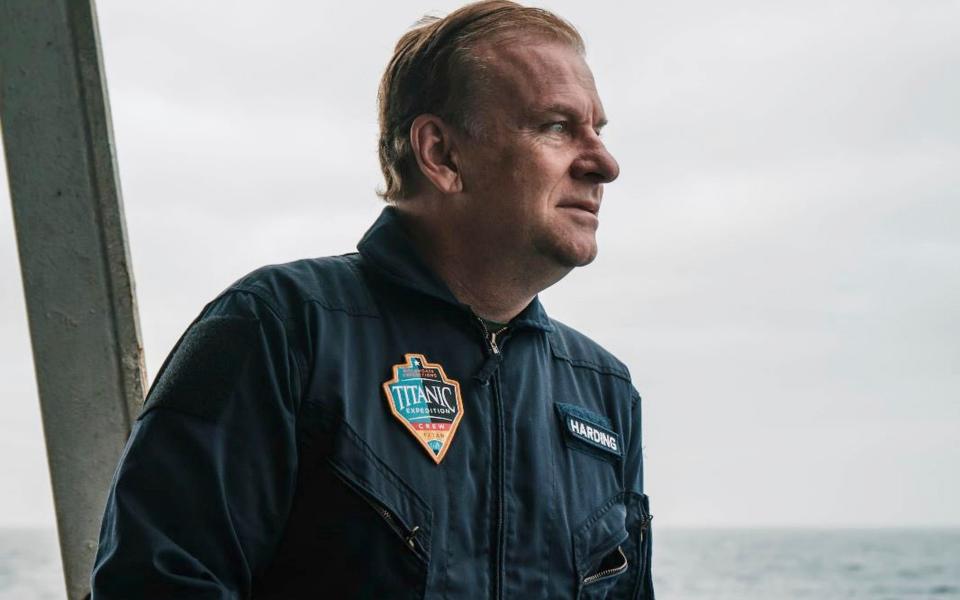
A friend of Hamish Harding has described him as “the quintessential British explorer” as the search-and-rescue mission for the Titan continues.
Colonel Terry Virts, a former commander of the International Space Station, spoke to the Today programme about Mr Harding’s love of adventure.
He said: “Some people watch Netflix and some people play golf, and Hamish goes to the bottom of the ocean or into space or, you know, he sets world records flying around the planet.
“As I’ve said several times now, Hamish is the quintessential British explorer. He loves adventure. He loves exploring and that’s just the kind of person he is.”
07:57 AM BST
'Experimental submersible is fundamentally dangerous'
He went on: “Why on earth you would go in a dodgy piece of technology where you actually have to sign away any right to sue the company for emotional damage, injury or death is beyond me.
“It is fundamentally dangerous, there was no back-up plan, it’s experimental and I’m afraid to say there’s an element of hubris if you want to go down and do that.”
07:56 AM BST
Retired admiral - submersible ‘impossible’ to find without emitting signal
Chris Parry, a retired navy rear admiral from the UK, said without an “emitting signal” from the missing deep-sea vessel near the wreck site of the Titanic it will be “impossible” to find in the timescale.
He told LBC: “I’m afraid the odds are vanishingly small.
“Obviously, we want to remain hopeful and optimistic but there are two problems here - one is actually finding the thing and secondly is how on earth are you going to get it off the seabed. It’s never been done before and I don’t think anybody’s got any ideas about how to do it at the moment.”
He added: “You’ve got this vastly complex seabed with all the debris of the Titanic, you’ve got hills and canyons and everything, and I’m afraid to say without an emitting signal from the vehicle itself it’s almost, well, I’d say it’s impossible to find in the timescale.”
07:46 AM BST
Search moved after 'underwater noises' heard
Rescuers searching for a tourist submersible near the Titanic wreck in the North Atlantic are focusing on a new search area after underwater noises were detected.
Underwater operations have been relocated to explore the source of the sounds picked up a Canadian P-3 aircraft and analysed by US Navy experts.
But so far remote operated vehicles [ROV] investigating the noises have “yielded negative results”, the Coast Guard said.
“Additionally, the data from the P-3 aircraft has been shared with our US Navy experts for further analysis which will be considered in future search plans,” the Coast Guard tweeted in the early hours of Wednesday, as the ROV searches continue.
07:29 AM BST
Safety fears revealed in documents
Documents show that OceanGate had been warned there might be catastrophic safety problems with its experimental vessel, due to the way the company tested it and a lack of review by an expert third party.
David Lochridge, OceanGate’s director of marine operations, said in a 2018 lawsuit that the company’s testing and certification was insufficient and would “subject passengers to potential extreme danger in an experimental submersible.”
The company insisted that Lochridge was “not an engineer and was not hired or asked to perform engineering services on the Titan.”
The Marine Technology Society, which describes itself as “a professional group of ocean engineers, technologists, policy-makers, and educators,” also expressed concern that year in a letter to Rush, OceanGate’s chief executive.
The society said it was critical that the company submit its prototype to tests overseen by an expert third party before launching in order to safeguard passengers. The documents were first reported by The New York Times.
07:27 AM BST
Picture: New rescue equipment flown in
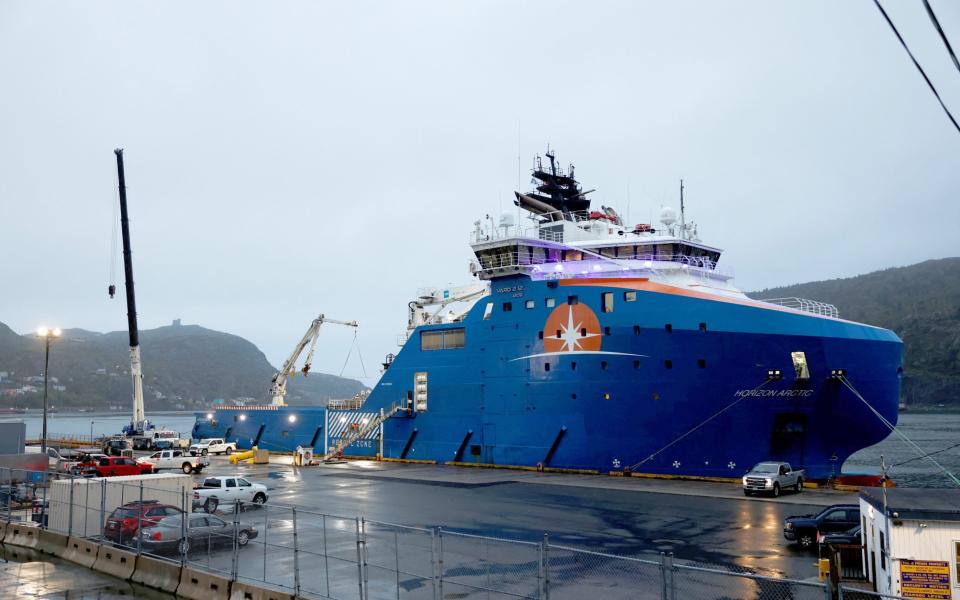
This picture shows new rescue equipment flown in by US Air Force transport planes loaded onto the offshore vessel Horizon Arctic in the port of St John, Newfoundland, before its deployment to the search area. The equipment is understood to include submarines and winches.
06:38 AM BST
Oxygen running out, warns US Coast Guard
The clock is ticking to locate the missing submersible, with approximately 30 hours of oxygen left.
At around 6pm BST on Tuesday, the US Coast Guard’s Captain Jamie Frederick said there was about 40 hours of breathable air left aboard the submersible. That time has now fallen to just 30 hours.
“We know from the data we were using, a starting point was 96 hours,” he said.
“We know there’s about 40 hours of breathable air left, based on that initial report.”
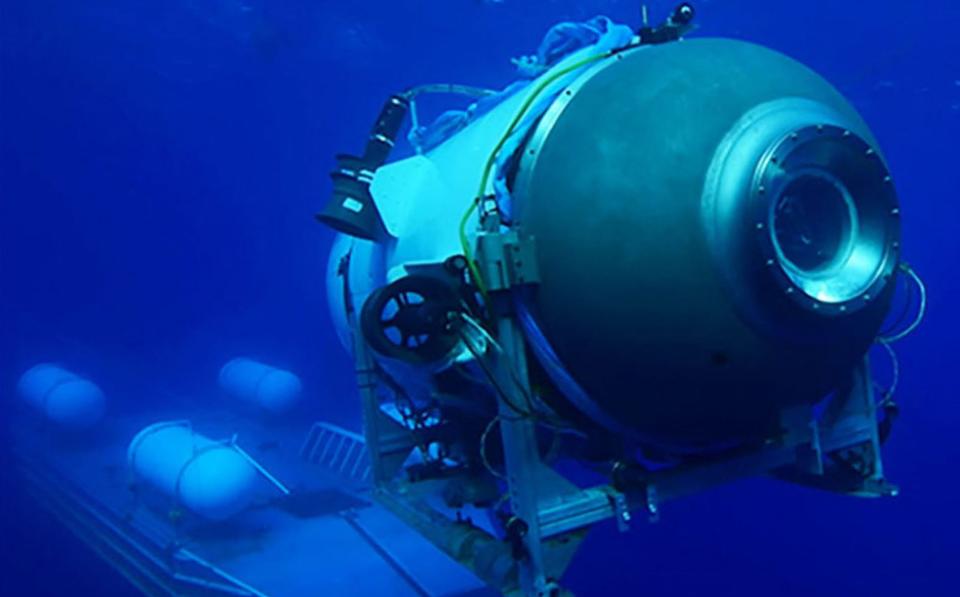
05:46 AM BST
Canadian P-3 aircraft detects underwater noises
According to the US Coast Guard, Canadian P-3 aircraft detected underwater noises in the search area.
“As a result, ROV operations were relocated in an attempt to explore the origin of the noises,” a tweet read.
The US Coast added those ROV searches “yielded negative results” but continue.
Canadian P-3 aircraft detected underwater noises in the search area. As a result, ROV operations were relocated in an attempt to explore the origin of the noises. Those ROV searches have yielded negative results but continue. 1/2
— USCGNortheast (@USCGNortheast) June 21, 2023
05:16 AM BST
Explorers claim 'signs of life'
Friends of the passengers on board the submersible claim “signs of life” were detected in the search zone.
A group known as The Explorers Club said “data from the field” gave them hope the five people believed to be on board could be alive.
While the US Coast Guard confirmed on Tuesday night the search had not yielded any results, the president of The Explorers Club claimed “signs of life” had given them “cause for hope”:
Message from President Richard Garriott Regarding the Ongoing Titanic Search and Rescue Mission pic.twitter.com/ec7YX5VQCY
— ExplorersClub (@ExplorersClub) June 21, 2023
04:07 AM BST
Hope pinned on deep-diving robot
French scientists are racing to get to the search zone, amid hope their robot with capability to dive to a depth of 6000m (20,000ft) could lead to a breakthrough in the difficult rescue mission.
France’s national integrated marine science research institute announced Tuesday it was diverting Atlante, a research vessel which carries the Victor 6000 autonomous robot.
Victor 6000 is a remotely operated deep-water system that can generate high-quality underwater pictures and is equipped with sensors that may be able to detect the missing vessel.
It is expected to arrive by 8pm Wednesday, according to Hervé Berville, the French Secretary of State in charge of Sea.
“The idea and our goal is for the ship to arrive as soon as possible,” Mr Berville said.
“This is a race of time.”
Mr Berville spoke to BFMTV:
A French vessel operated by @Ifremer_fr, at the request of President @EmmanuelMacron, was diverted to the search area of the submarine "Titan", which was visiting the wreck of the Titanic. @HerveBerville@BFMTV
pic.twitter.com/ItZO4HMYLt— Pascal Confavreux (@P_Confavreux) June 21, 2023
03:37 AM BST
The three places the missing vessel could be
Research oceanographer Jules Jaffe, who was part of the team that developed the optical imaging system used to find the Titanic in 1985, said there are three places the missing vessel could be:
Seafloor
Water column
The surface
“It’s either sitting on the seafloor, somewhere in the water column, or sitting on the surface,” he told ABC10 in San Diego.
“It could be in the water column. I think that’s probably the most likely place it is.”
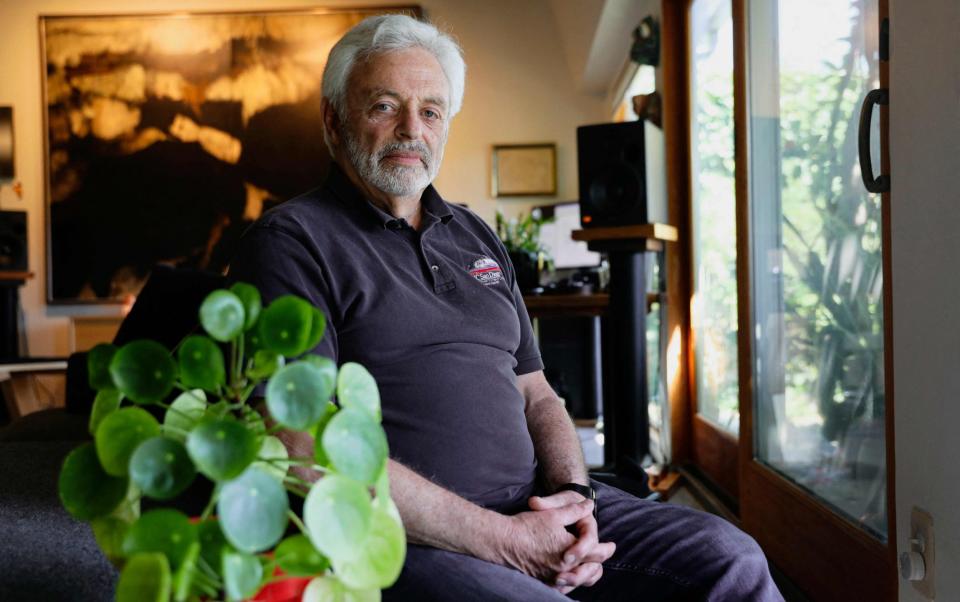
Jamie Pringle, a professor of forensic geosciences at Keele University, said if the submersible had settled on the ocean floor, it could be very difficult to spot.
“The bottom of the ocean is not flat; there are lots of hills and canyons,” Mr Pringle said, according to NBC.
03:12 AM BST
Four things that may have gone wrong with the Titanic sub
Venturing to the bottom of the sea is fraught with complications, and some experts argue it is more challenging than going into space.
Here are four things that could have gone wrong for the Titan and her crew:
A power blackout
Fire
Flood
Entangling
Read the full analysis by Science Editor Sarah Knapton here
02:49 AM BST
Shipwreck hunter: Reports of 'tapping' in the water
David Mearns, a shipwreck hunter and friend of two of the missing people, Hamish Harding and Paul Henri Nargeolet, said he had heard reports from an explorers’ club that rescuers had heard “tapping” in the water.
“There are some reports that I’ve just read from my own club, which is how I know Hamish, that somebody today has heard some tapping,” he told Channel 4.
“It’s hard to imagine how they could have heard that, but they are at least trying to encourage the rescue efforts to continue [on the basis] that they’ve heard something which suggests that the men are alive.”
The Telegraph could not independently verify the reports.
02:27 AM BST
Titan sub firm boss was warned snags could be ‘catastrophic’
The chief executive of OceanGate was reportedly warned by leaders in the submersible industry that the company’s “experimental approach” could result in problems “from minor to catastrophic”.
The warning came in a 2018 letter to Stockton Rush obtained by the New York Times.
Meanwhile, it emerged that OceanGate was involved in a complex legal case in 2018 with a former employee who claimed there were safety issues.
Read the full story by Ben Farmer and Nick Allen here
01:36 AM BST
Oceanologist: Submersible is not above the surface
Dr Simon Boxall told GB News the vessel would not be above the surface because if it was, it would be able to use radios.
He spoke about other misconceptions in relation to the rescue effort and said it was a mistake to believe passengers could use escape hatches, because if they did they would be crushed.
Dr Boxall said another misconception was that people would get decompression sickness, colloquially known as “the bends”, if the vessel moved up to the surface too quickly.
He told PA that those on board would not suffer “ill-effects” because the submersible is at atmospheric pressure.
12:55 AM BST
Chilling final text from Harding to Virts revealed
Retired NASA astronaut Terry Virts has shared the last text he received from Hamish Harding before he vanished.
Mr Virts said his friend “understood the risks” he could face and was “very excited” about the underwater adventure.
“He went down to the deepest part of the ocean, set a few world records … at the Mariana Trench [the deepest part of the ocean] and we talked quite a bit about the risks and the different things that they were going to be able to do,” he told ITV.
A day before the expedition took off, Mr Harding texted Mr Virts and also shared his excitement on social media.
“Hey, we’re headed out tomorrow, it looks good, the weather’s been bad so they’ve been waiting for this,” he messaged Mr Virts.
12:24 AM BST
Vessel sent out a distress signal, says oceanologist
Oceanologist Dr Simon Boxall, of the University of Southampton, believes the submersible has sent out a distress signal.
He told PA: “This is second-hand knowledge but my understanding is that they have received a signal from the submarine.
“You can’t use radios underwater. You rely totally on ‘pings’. What they have is really limited communication.
“Apparently they have had, and I don’t know when, they have had an emergency ping saying the vessel is in distress.”
Dr Boxall said he did not know if the ping was “automatically generated or generated by people on board”.
“It could be that the vessel is lost already or it could be automatic,” he said.
He did not know when the message was transmitted.
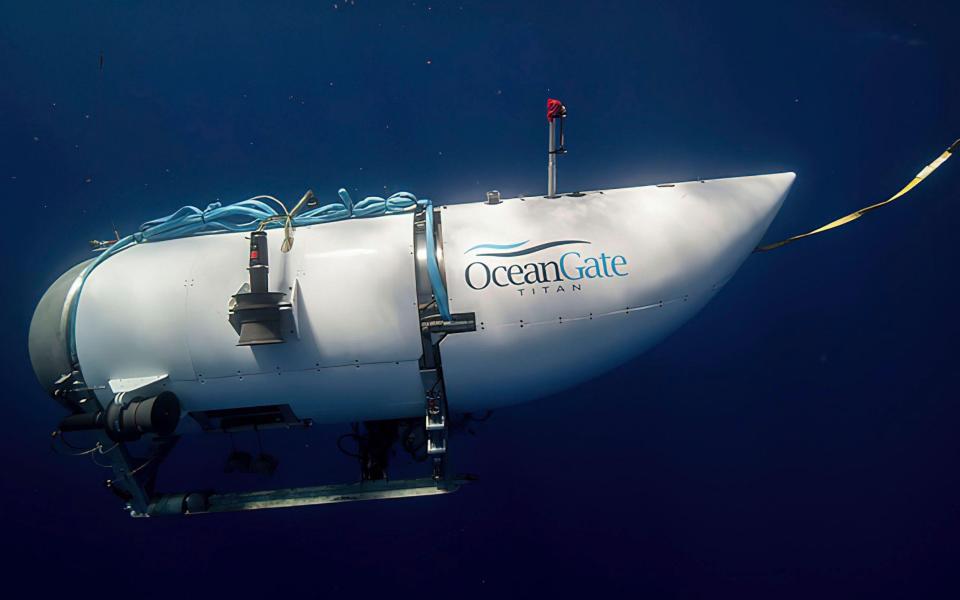
12:21 AM BST
Rescuers must shift focus
Attention has now turned to the complex task of attempting a rescue in the inky, crushing depths of the Atlantic.
The Titan could be more than two miles down on the ocean floor where the sea bed near the Titanic is undulating and complex around the wreckage of the Titanic.
The pressure at that depth is also 400 times what it is at sea level, beyond the limits of what human divers can reach outside of a specialised container. Though finding the vessel is the first major challenge.
Read the full story by Rozina Sabur here

